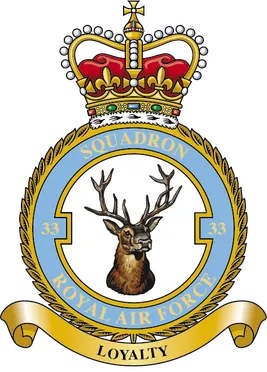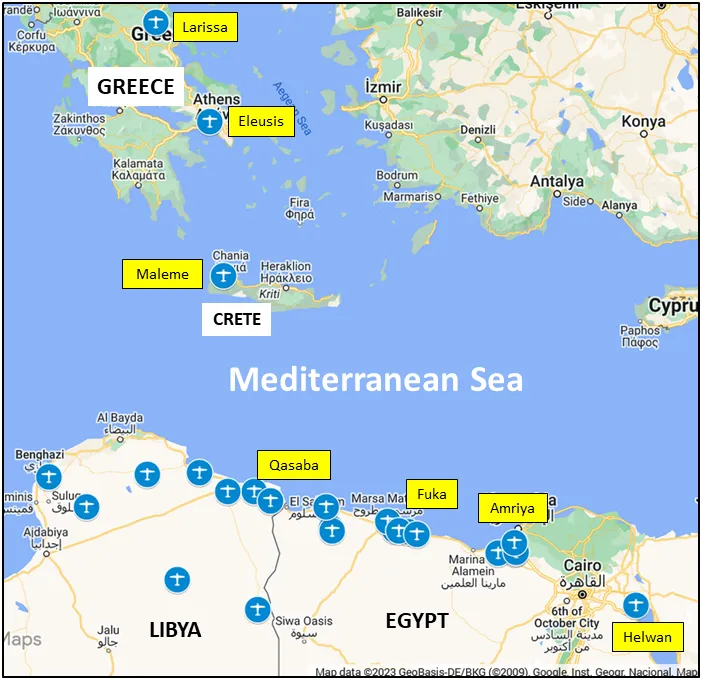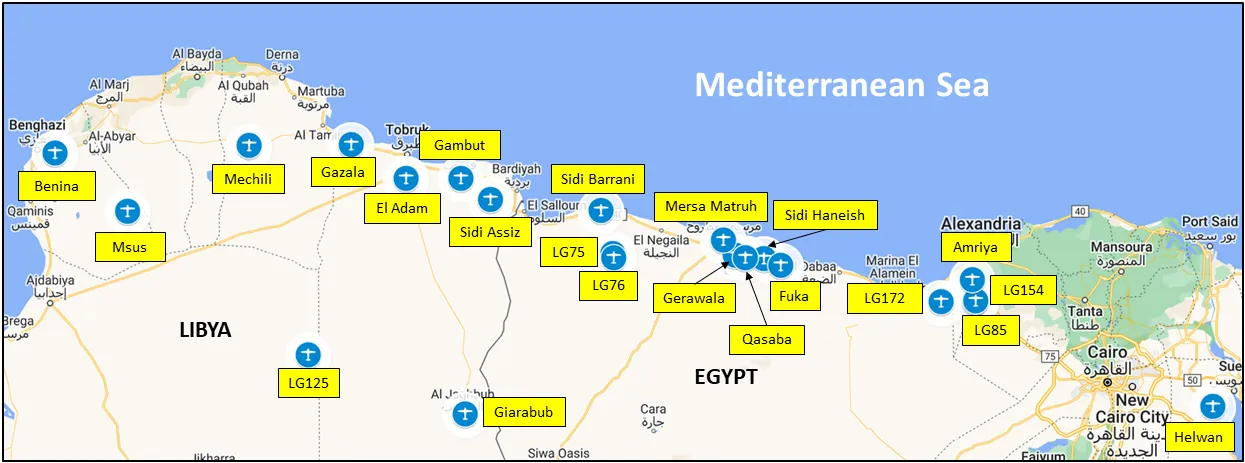History of the Squadron during World War II (Aircraft: Gladiator, Hurricane, Spitfire, Tempest)

The squadron was formed in the course of WWI as a Home Defence squadron to combat the Zeppelin raids on London. It was disbanded in 1919.
It was reformed at RAF Netheravon on 1 March 1929 as a bomber unit, but in 1935, as part of Britain's response to the Second Italo-Abyssinian War, the unit moved to Egypt. When the Abyssinian crisis was over, the squadron remained in the Middle East, taking part in air policing in Palestine. In February 1938, the squadron re-equipped with Gloster Gladiators, changing role to a fighter squadron, although at first it continued in support of British ground forces in Palestine.
The squadron remained in the Middle East for most of World War II. From September 1939 it was involved in the fighting against the Italian forces. Equipped initially with the Gloster Gladiators they had used in Palestine, the Squadron claimed its first victories of the Second World War on 14 June 1940, while supporting the British capture of Fort Capuzzo, when the squadron shot down an Italian Caproni Ca 310 and a Fiat CR.32. It suffered its first losses of the war five days later in a combat with Fiat CR.42 Falcos, with one Gladiator being shot down in exchange for two Fiats. The squadron re-equipped with Mk I Hurricanes in October 1940, allowing it to intercept the Italian SM.79 bombers, which were faster than the Gladiator.
It was withdrawn from the desert fighting in January 1941, to help resist the Italian invasion of Greece. From 12 March it was led by Pat Pattle, the leading Commonwealth flying ace, until he was killed in action on 20 April. The squadron was involved in heavy fighting following the German intervention in Greece, and had to be withdrawn to Crete on 27 April, with its 4 remaining Hurricanes.. Due to continuing heavy losses, the squadron had to amalgamate with No. 80 Squadron RAF and the ground personnel fought hand-to-hand with German paratroopers to protect Maleme airfield. The last remaining hurricane flew to Egypt on 19th May, and the remnants of 33 Squadron retired to Egypt by the end of May after the Battle of Crete. The squadron was temporarily attached to No. 30 Squadron at Amriya to build itself up again. It returned to support the Army in the Western Desert, re-equipping with Kittyhawks and Tomahawks before they obtained Hurricane IIB fighters. During the first 8 months of 1942, the squadron occupied a number of bases in North Africa as it moved Eastwards and Westwards depending on the ebb and flow of the North African campaigns. In early 1943 the squadron was tasked with the defence of Benghazi. Supermarine Spitfire Vs superseded the Hurricanes in December 1943.
The squadron returned to the UK in April 1944, to prepare for Operation Overlord (the Allied invasion of Normandy. It flew the Spitfire IXF from RAF Lympne in Air Defence of Great Britain, though under the operational control of RAF Second Tactical Air Force (2nd TAF). It flew fighter support on D-Day (6 June 1944), then moved to France with 2nd TAF, when it concentrated on ground-attack operations. It re-equipped with the Hawker Tempest in December, returning to action from Gilze-Rijen in February 1945, flying fighter sweeps in North West Europe until the cessation of hostilities. The squadron remained in Germany until 1949.
Maps of the bases used by #33 Squadron in Greece and North Africa 1940-1943





 Flight Lieutenant
Flight Lieutenant
 Warrant Officer 2
Warrant Officer 2
 Flight Lieutenant
Flight Lieutenant